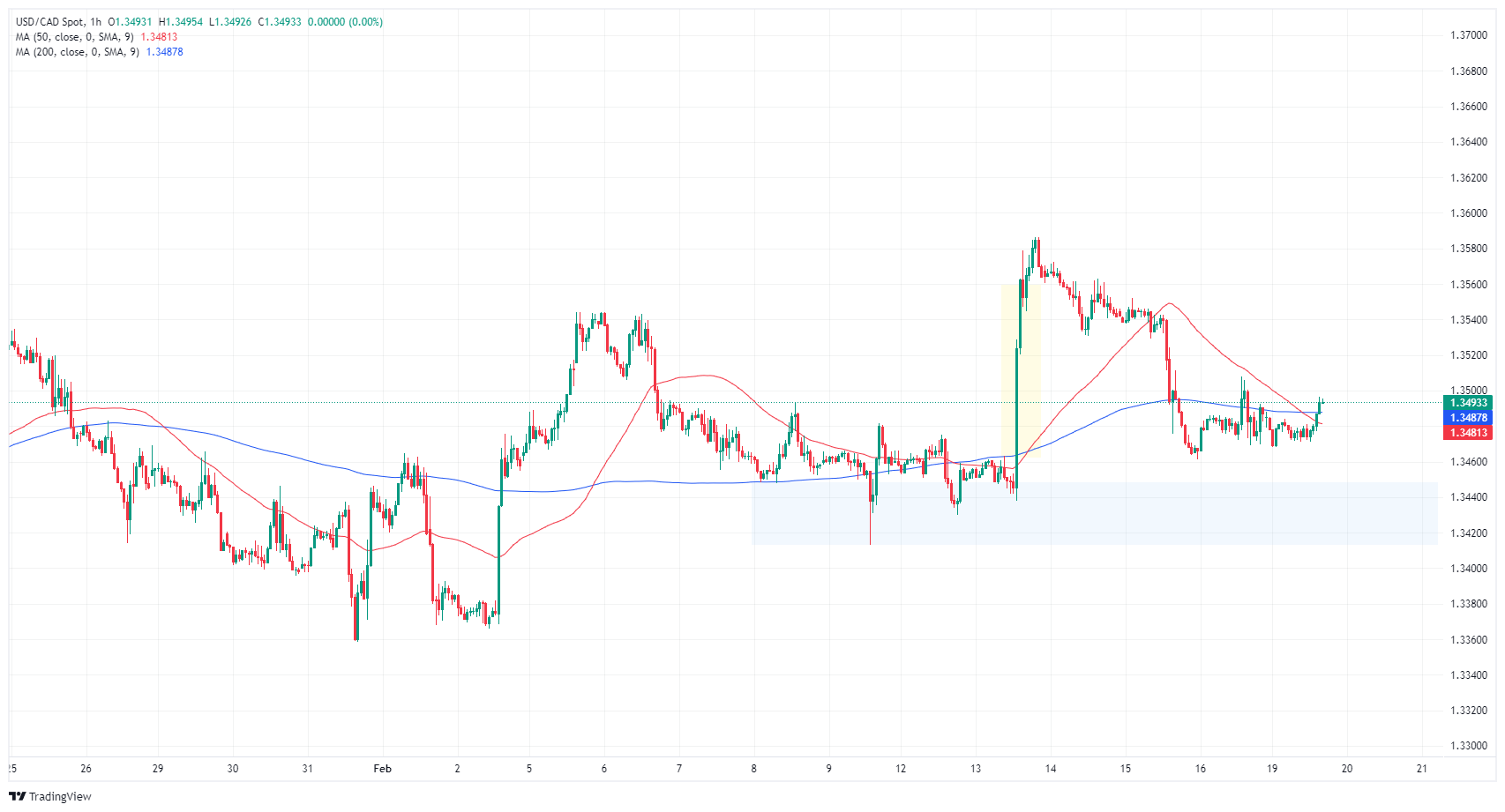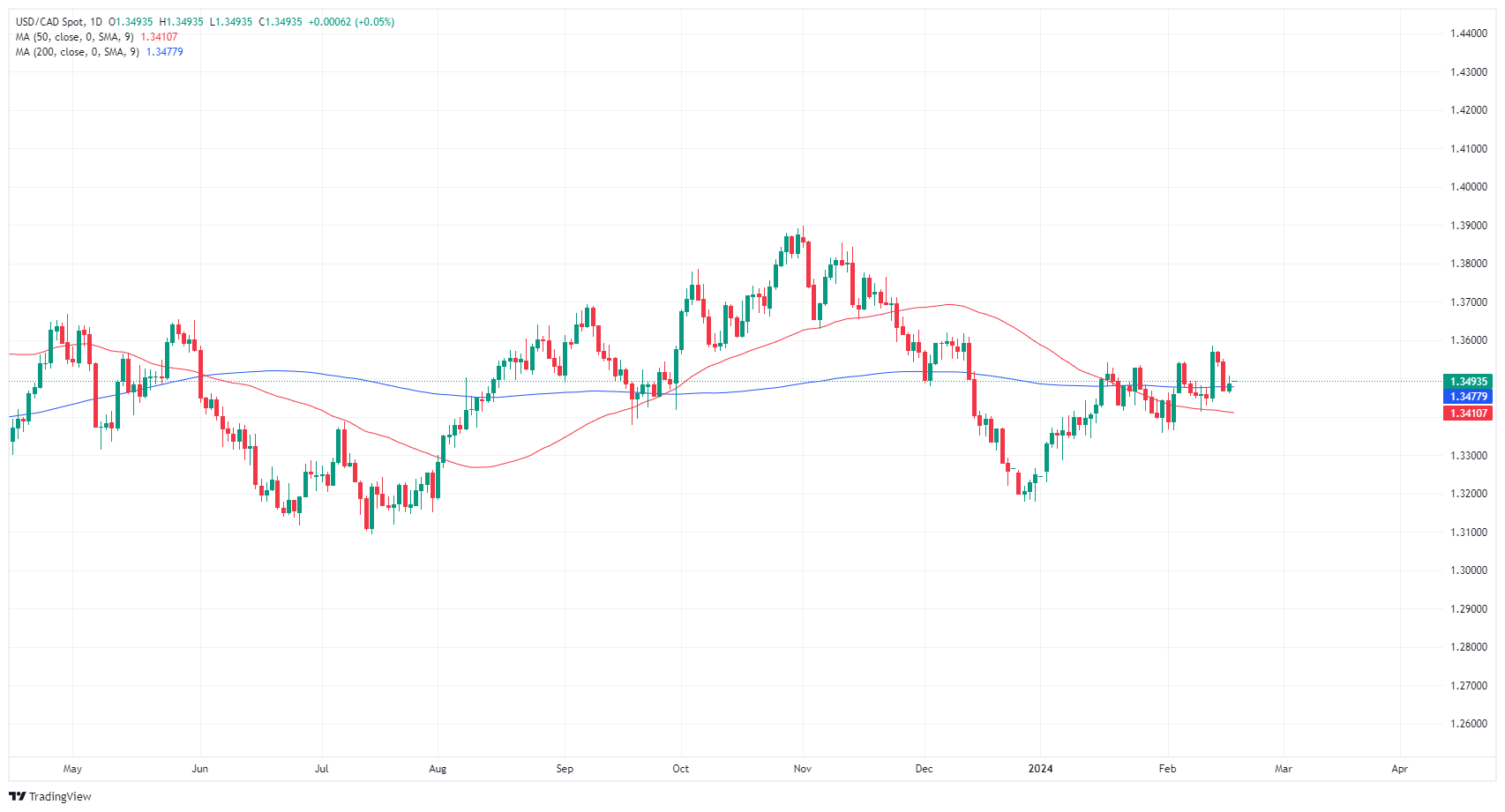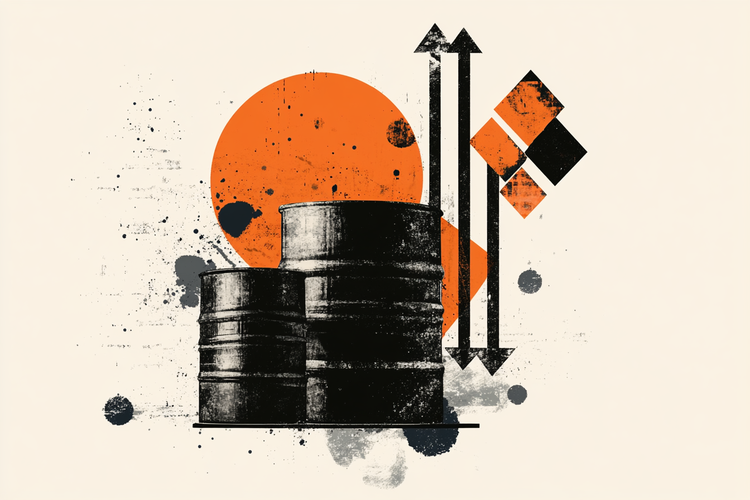- Monday of little activity in the markets, waiting for this week's big data.
- Canada and the US have holidays on Monday, reducing trade volumes.
- The Canadian CPI will be published on Tuesday and the minutes of the US FOMC meeting on Wednesday.
The Canadian Dollar (CAD) is stuck in a short-term technical range as the new trading week begins with low market volume. The US and Canadian markets are closed on Monday for holidays, and two-thirds of Canadians take the day off. The Canadian financial sector, specifically the Toronto Stock Exchange, remains closed during the day. The US also marks Presidents' Day, and US institutions will begin the new trading week on Tuesday.
In Canada, another data on inflation, the Consumer Price Index (CPI), will be published on Tuesday, and the Markets in general will be attentive to the minutes of the meeting of the Federal Open Market Committee (FOMC) on Wednesday, since the Investors are watching how close the US Federal Reserve (Fed) is to cutting interest rates.
Daily Market Summary: Canadian Dollar Swaying in Sideways Markets
- The Canadian Commodity Price Index rose 1.2% in January, up from -4.9% in December.
- Industrial product prices contracted -0.1% in January, down from -1.6% in December (revised slightly from -1.5%).
- Both indicators have little impact and barely had any influence, despite the fact that raw materials recorded their fourth consecutive month of contraction.
- On Tuesday, Canadian year-on-year CPI inflation is expected to decline slightly to 3.3% from 3.4% in the previous period.
- Canadian CPI month-on-month inflation is expected to rebound to 0.4% in January from -0.3% in December.
- Canadian retail sales scheduled for Thursday are expected to show a 0.8% month-on-month rebound in December, up from -0.2% in November.
- On Wednesday, the FOMC Meeting Minutes will reveal the Fed's internal discussions on the US central bank's interest rate guidance.
- According to the CME's FedWatch tool, money markets expect a first rate cut from the Fed in June, with a more than 90% chance of a new rate cut in July.
Current rate of the Canadian dollar
Below is the percentage change of the Canadian Dollar (CAD) against the currencies listed today. The Canadian dollar was the weakest currency against the New Zealand dollar.
| USD | EUR | GBP | CAD | AUD | JPY | NZD | CHF | |
| USD | 0.16% | 0.18% | 0.10% | 0.04% | 0.05% | -0.12% | 0.12% | |
| EUR | -0.16% | 0.02% | -0.06% | -0.12% | -0.11% | -0.28% | -0.04% | |
| GBP | -0.18% | -0.01% | -0.08% | -0.14% | -0.12% | -0.29% | -0.05% | |
| CAD | -0.10% | 0.06% | 0.06% | -0.06% | -0.05% | -0.22% | 0.02% | |
| AUD | -0.02% | 0.14% | 0.13% | 0.08% | 0.03% | -0.14% | 0.10% | |
| JPY | -0.05% | 0.11% | 0.15% | 0.05% | -0.01% | -0.16% | 0.08% | |
| NZD | 0.12% | 0.28% | 0.29% | 0.22% | 0.16% | 0.17% | 0.25% | |
| CHF | -0.13% | 0.04% | 0.05% | -0.03% | -0.08% | -0.08% | -0.25% |
The heat map shows the percentage changes of the major currencies against each other. The base currency is chosen in the left column, while the quote currency is chosen in the top row. For example, if you choose the euro in the left column and scroll down the horizontal line to the Japanese yen, the percentage change that appears in the box will represent EUR (base)/JPY (quote).
Technical Analysis: Mixed Canadian Dollar on a quiet Monday
The Canadian Dollar (CAD) is trading mixed against the major basket currencies on Monday at the start of the new trading week. The CAD advances just one tenth against the Euro (EUR) and the British Pound (GBP), but falls one fifth against the New Zealand Dollar (NZD).
USD/CAD is moving within short-term technical limits near 1.3500, and the pair remains just north of a supply zone between 1.3440 and 1.3420. The pair spent most of last week closing last Tuesday's Fair Value Gap (FVG), and traders will be looking for a breakout of the structure to get USD/CAD back into buying territory below 1.3460.
USD/CAD remains hampered by the 200-day SMA at 1.3478, and near-term price action is finding modest but stable technical support at the 50-day SMA near 1.3410.
USD/CAD Hourly Chart
USD/CAD Daily Chart
Frequently Asked Questions about the Canadian Dollar
What factors determine the price of the Canadian dollar?
The key factors that determine the price of the Canadian dollar (CAD) are the level of interest rates set by the Bank of Canada (BoC), the price of oil, Canada's main export product, the health of its economy, inflation and the trade balance, which is the difference between the value of Canadian exports and its imports. Other factors are market confidence, that is, whether investors bet on riskier assets (risk-on) or look for safe assets (risk-off), with the risk-on being positive for the CAD. As its largest trading partner, the health of the US economy is also a key factor influencing the Canadian dollar.
How do Bank of Canada decisions affect the Canadian dollar?
The Bank of Canada (BoC) exerts significant influence over the Canadian Dollar by setting the level of interest rates that banks can lend to each other. This influences the level of interest rates for everyone. The BoC's main objective is to keep inflation between 1% and 3% by adjusting interest rates up or down. Relatively high interest rates are usually positive for the CAD. The Bank of Canada can also use quantitative easing and tightening to influence credit conditions, with the former being negative for the CAD and the latter being positive for the CAD.
How does the price of oil affect the Canadian dollar?
The price of oil is a key factor influencing the value of the Canadian Dollar. Oil is Canada's largest export, so the price of oil tends to have an immediate impact on the value of the CAD. Generally, if the price of oil rises, the CAD also rises, as aggregate demand for the currency increases. The opposite occurs if the price of oil falls. Higher oil prices also tend to lead to a higher probability of a positive trade balance, which also supports the CAD.
How does inflation data influence the value of the Canadian Dollar?
Although inflation has traditionally always been considered a negative factor for a currency, as it reduces the value of money, the opposite has actually happened in modern times, with the relaxation of cross-border capital controls. Higher inflation often leads central banks to raise interest rates, attracting more capital inflows from global investors looking for a lucrative place to store their money. This increases the demand for the local currency, which in the case of Canada is the Canadian Dollar.
How does economic data influence the value of the Canadian dollar?
The published macroeconomic data measures the health of the economy and may have an impact on the Canadian dollar. Indicators such as GDP, manufacturing and services PMIs, employment and consumer confidence surveys can influence the direction of the CAD. A strong economy is good for the Canadian dollar. Not only does it attract more foreign investment, but it may encourage the Bank of Canada to raise interest rates, resulting in a stronger currency. However, if economic data is weak, the CAD is likely to fall.
Source: Fx Street
I am Joshua Winder, a senior-level journalist and editor at World Stock Market. I specialize in covering news related to the stock market and economic trends. With more than 8 years of experience in this field, I have become an expert in financial reporting.







